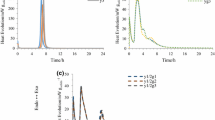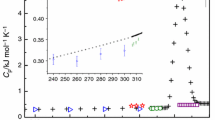Abstract
Kelley, Southard and Anderson1 have shown that the thermodynamic properties of calcium sulphate hemihydrate depend on whether the hemihydrate is produced from gypsum calcined in a steam-saturated atmosphere (α-hemihydrate), or under conditions where the partial pressure of water vapour is low (β-hemihydrate), but the nature of a hemihydrate prepared under conditions intermediate between these two extremes (for example, the manufacture of gypsum plaster by the kettle process) is not known for certain. These authors considered that such a hemihydrate would consist of a mixture of the α- and β-forms, but Eipeltauer2 considered that there would also be some hemihydrate crystals having properties intermediate between these two forms. Work that I have done shows that only the α- and β-hemihydrates can be detected by differential thermal analysis in a sample of hemihydrate prepared by calcining gypsum under conditions simulating the manufacture of gypsum plaster in a kettle.
Similar content being viewed by others
References
Kelley, K. K., Southard, J. C., and Anderson, C. T., U.S. Bur. Mines Tech. Paper 625 (1941).
Eipeltauer, E., Zement-Kalk-Gips, 9, 501 (1956).
Powell, D. A., Nature, 182, 792 (1958).
Author information
Authors and Affiliations
Rights and permissions
About this article
Cite this article
POWELL, D. The α- and β-Forms of Calcium Sulphate Hemihydrate. Nature 185, 375–376 (1960). https://doi.org/10.1038/185375a0
Issue Date:
DOI: https://doi.org/10.1038/185375a0
- Springer Nature Limited





